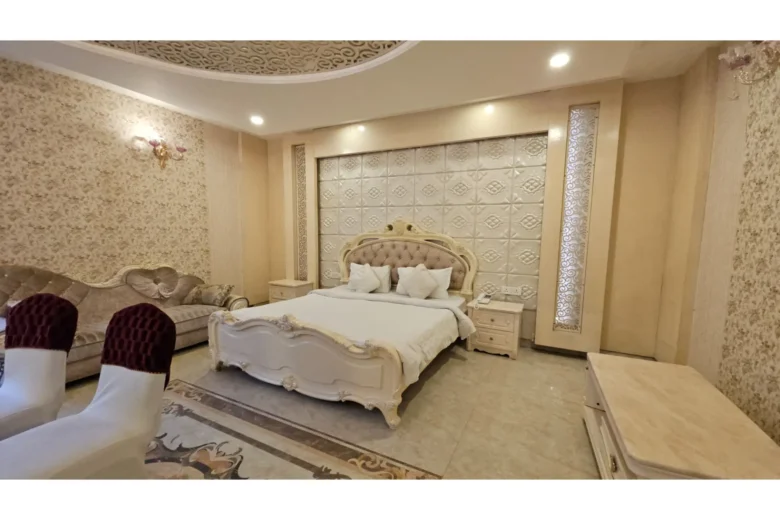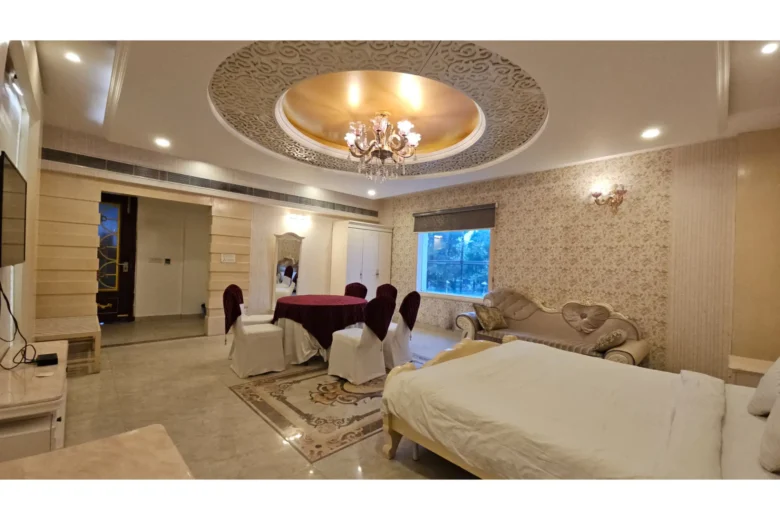When planning a stay at a hotel, one of the most important decisions you’ll make is choosing the right room type. Whether you’re traveling for business, leisure, or a special occasion, selecting the best room type can significantly enhance your experience. With a variety of options available, from standard rooms to luxurious suites, it’s essential to match your room choice to your specific needs and preferences. Here’s a comprehensive guide to help you select the best room type for your stay.
1. Understand the Purpose of Your Stay
The first step in selecting the best room type is to consider the primary purpose of your visit. Your travel needs will influence the kind of room that will best suit you:
- Business Travelers: If your visit is work-related, you’ll likely need a room that offers a comfortable workspace, reliable Wi-Fi, and easy access to business amenities like meeting rooms or a business center.
- Leisure Travelers: For those on vacation, a room with added comfort, scenic views, and proximity to recreational facilities like the pool or spa may be more appealing.
- Special Occasions: If you’re celebrating a special event, such as an anniversary or honeymoon, you might prefer a suite or a room with luxury amenities, such as a private balcony or in-room jacuzzi.
2. Know the Basic Room Types
Hotels typically offer several standard room types, each designed to cater to different preferences and budgets. Here’s a breakdown of the most common options:
- Standard Room: Also known as a “Classic Room” or “Basic Room,” this option is usually the most affordable and offers essential amenities like a bed, bathroom, TV, and basic furniture. It’s ideal for short stays or travelers on a budget.
- Deluxe Room: A step up from the standard room, a Deluxe Room typically offers more space, better views, and enhanced amenities. This room type is perfect for travelers who want a bit more comfort without splurging on a suite.
- Executive Room: Designed for business travelers, Executive Rooms often include a larger workspace, faster Wi-Fi, and access to business services. These rooms may also offer additional perks like complimentary breakfast or access to an executive lounge.
- Suite: Suites offer the most space and luxury, with separate living and sleeping areas. They often include high-end amenities such as a kitchenette, dining area, and premium bathroom facilities. Suites are ideal for longer stays, families, or anyone looking for an indulgent experience.
3. Consider the View
The view from your room can greatly impact your overall experience, especially if you’re visiting a scenic destination. Here are some options to consider:
- City View: Rooms with city views are great for urban explorers who enjoy watching the hustle and bustle from their window. These rooms are typically found in city-center hotels and offer a dynamic backdrop.
- Garden View: If you prefer a more serene and calming environment, opt for a room with a garden view. These rooms often overlook lush, landscaped grounds, providing a peaceful atmosphere.
- Ocean or Mountain View: For those staying at beach resorts or in mountainous regions, choosing a room with an ocean or mountain view can be a highlight of your stay. These rooms often come at a premium but offer breathtaking scenery right from your window.
4. Evaluate the Amenities You Need
Different room types come with varying amenities, so it’s important to consider what you’ll need during your stay:
- Work Amenities: If you’re on a business trip, look for rooms with a spacious desk, ergonomic chair, and high-speed internet. Some hotels also offer rooms with fax machines, printers, or office supplies.
- Relaxation Features: For a more luxurious experience, consider rooms with added comforts such as a soaking tub, rain shower, premium toiletries, and a king-size bed with high-thread-count linens.
- Family-Friendly Amenities: Traveling with children may require extra amenities like a crib, rollaway bed, or adjoining rooms. Some family-friendly rooms also come with kitchenettes for easy meal preparation.
- Special Amenities: If you’re looking for something extra, like a private balcony, in-room jacuzzi, or fireplace, be sure to inquire about these features when booking.
5. Think About Accessibility Needs
If you or a member of your party has accessibility needs, it’s crucial to choose a room that accommodates those requirements. Many hotels offer accessible rooms with features such as wider doorways, roll-in showers, grab bars, and lower light switches.
- Tip: When booking, be sure to communicate any specific accessibility needs to the hotel staff to ensure your room is fully equipped for your comfort.
6. Factor in the Length of Your Stay
The duration of your stay can also influence the type of room that will best suit your needs:
- Short Stays: For brief visits, a standard or deluxe room may suffice, especially if you plan to spend most of your time exploring the destination rather than in your room.
- Extended Stays: For longer visits, consider upgrading to an executive room or suite that offers more space, additional seating areas, and possibly kitchen facilities. This can make your stay more comfortable and convenient.
7. Consider the Room Location Within the Hotel
The location of your room within the hotel can affect your experience in various ways:
- Higher Floors: Rooms on higher floors generally offer better views and are quieter, as they are further from street-level noise. However, they may be less convenient if you frequently need to access the lobby or other hotel facilities.
- Proximity to Elevators: Rooms near elevators can be more convenient, but they might also be noisier due to foot traffic. If noise is a concern, request a room away from elevators, stairwells, or other high-traffic areas.
- Near Amenities: If you plan to use specific hotel amenities frequently, such as the pool, gym, or restaurant, choosing a room nearby can save you time and effort.
8. Budget Considerations
While it’s tempting to choose the most luxurious option, it’s important to select a room that fits within your budget:
- Standard or Deluxe Rooms: These offer good value for money and are often sufficient for most travelers.
- Executive Rooms or Suites: These are worth the extra cost if you’re looking for more space, luxury, or specific amenities. Keep an eye out for special offers or packages that can make these options more affordable.
9. Look for Special Packages and Promotions
Many hotels offer special packages or promotions that can add value to your stay. These might include complimentary breakfast, spa credits, or discounted rates for extended stays.
- Tip: When booking, ask about any current promotions or package deals that might be available. These can often make upgrading to a better room type more cost-effective.
10. Read Reviews and Ask for Recommendations
Before making your final decision, it’s a good idea to read reviews from other travelers who have stayed at the hotel. These can provide insights into the best room types, views, and amenities.
- Tip: Don’t hesitate to contact the hotel directly and ask for recommendations based on your specific needs. Hotel staff can often provide valuable advice on which room type will best suit your stay.
Conclusion
Selecting the perfect room type is an essential part of planning your stay at any hotel. By considering factors such as the purpose of your visit, desired amenities, room location, and budget, you can choose a room that will enhance your overall experience. Whether you’re looking for a luxurious suite, a quiet executive room, or a standard room with all the basics, this guide will help you make an informed decision that aligns with your needs and preferences. Enjoy your stay, knowing you’ve chosen the best room for your unique travel experience.



